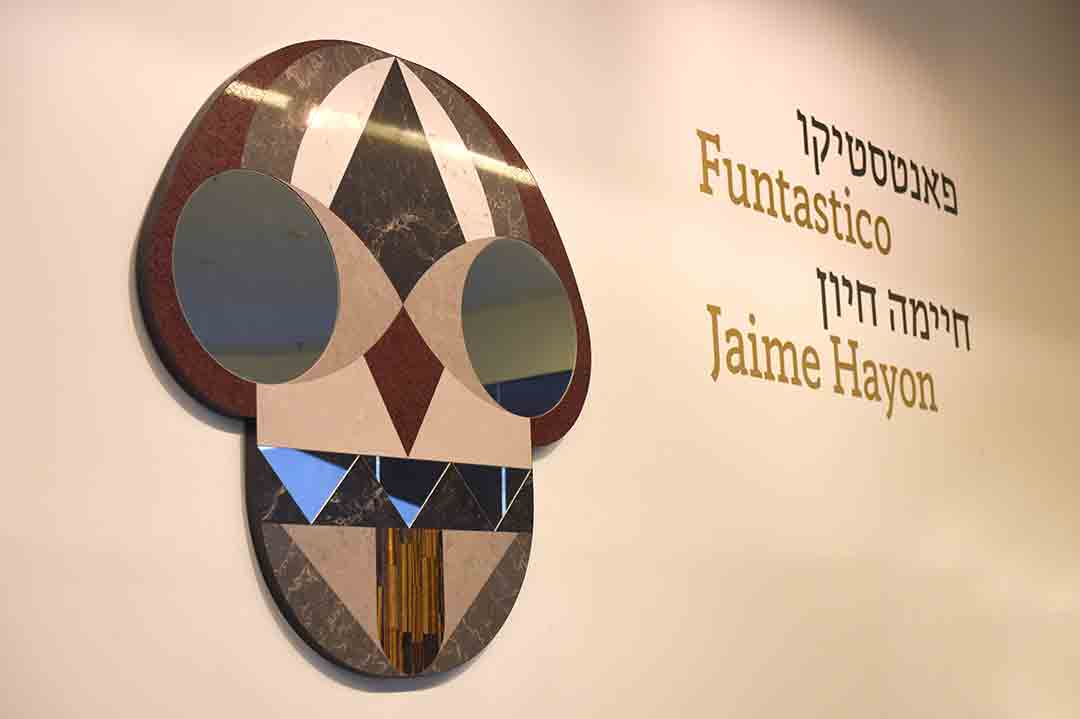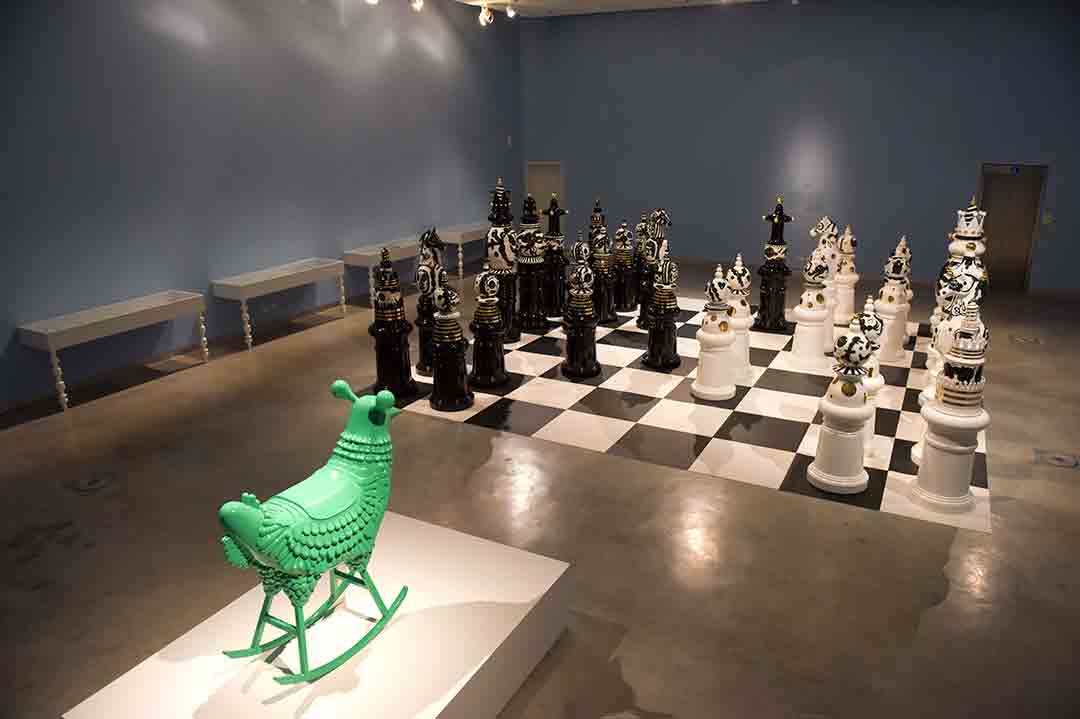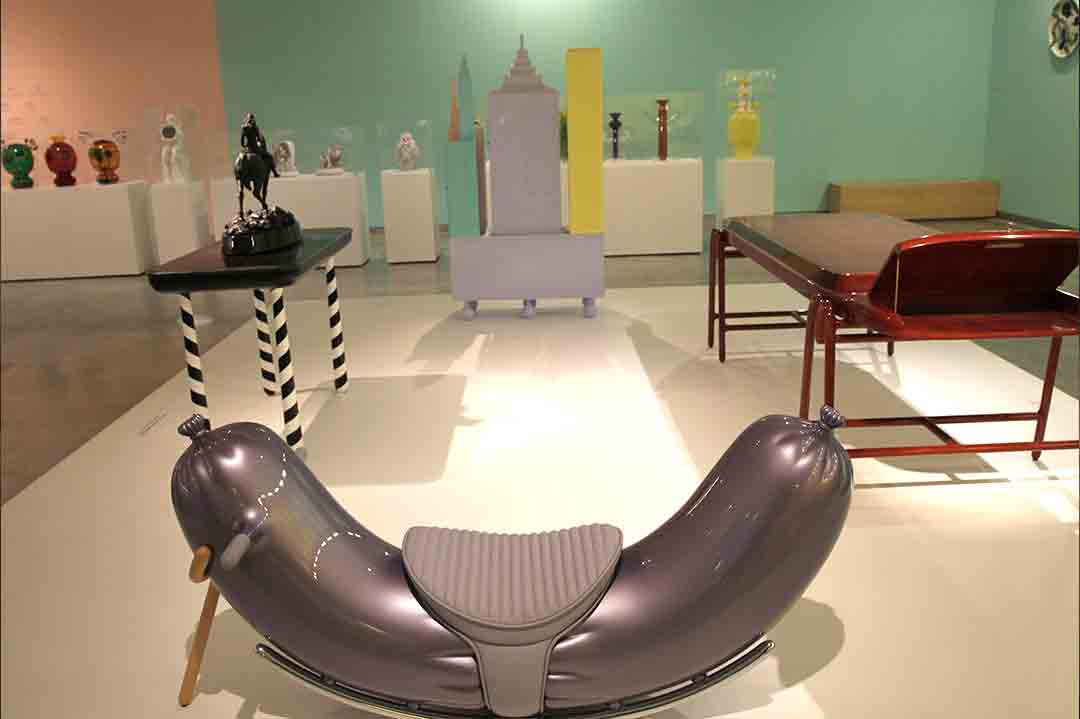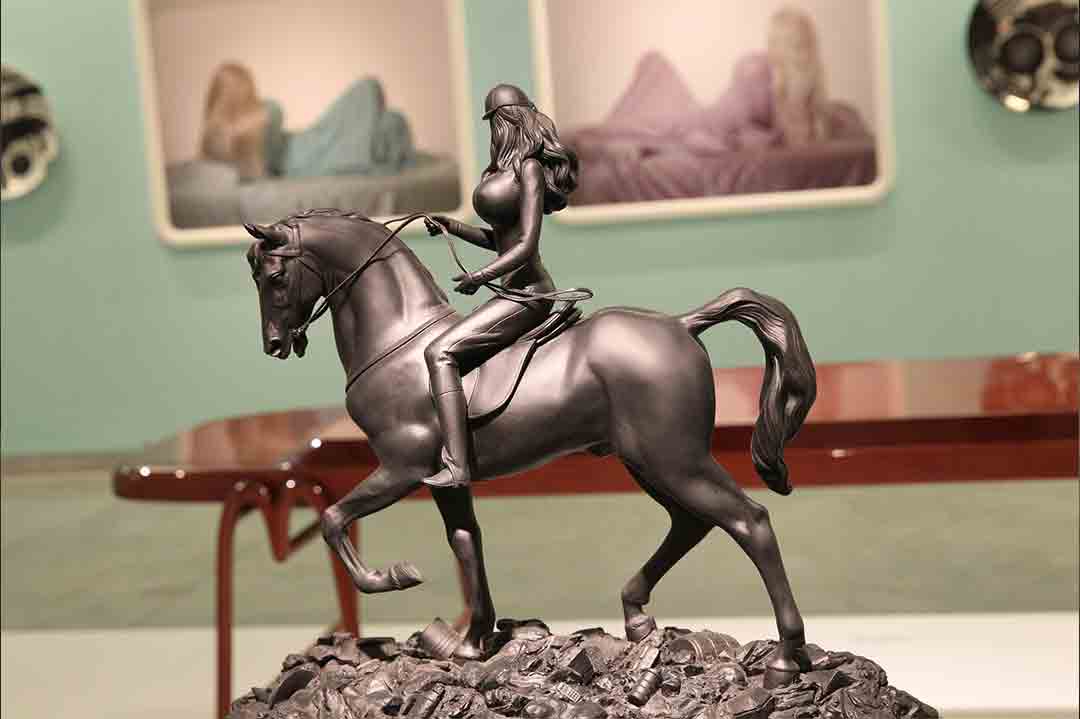Funtastico




Clowns turning into lamps, tables that grow legs, chess pieces as large as men, swinging green chickens, chairs inspired by American hot dogs and cups in the shape of New York skyscrapers: these are only a few of the creations by designer Jaime Hayon, that will be on display at FUNTASTICO 30 in November at the Holon Museum of Design. Each has been displayed at the Groninger Museum in Holland last year, except for two new pieces that have been prepared especially for this exhibit: a pair of large wall-sized mirrors, continuing Hayon's humorous storyline, and reminding us of giant primitive face masks.
The masks, a combination of mirrors and embedded stonework of caesar stone, Hayon calls 'Mirror of History'. "I wanted to create masks that represent figures from my cosmos, that which combines fantasy and light playfulness, with quality artwork", he says. "Every culture, from ancient nations in the Middle East to the Aztecs in America, used masks, and each mask tells a story." The two masks will be donated at the end of the exhibit to the permanent collection of the museum.
Hayon, who was recently chosen by Time Magazine as one of the 100 most important artists of our day, studied industrial design in Madrid and Paris and in 1997 began work with Fabrica, the research group of Benetton. In 2004 he started his career of working independently which included mainly furniture design and interior design. His work is driven by his need to create a world of his own made of amusing elements, fantasy and stories, which are made of extraordinary artistic skill and are characterized by distinct attention to detail and finishing touches.
Embedding and construction of the masks was completed in Israel, by a local marble craftsman who had to stand up to the challenge of the attachments and complex cuts of the mirrors and surfaces. The assembly process was overseen by Gal Gaon, the owner and artistic manager of Talents Gallery. "Hayon worked with a technique called 'inlay', reminiscent of veneer work of the 19th century," says Gaon. "You cut pieces of the material and create pictures from them. Since he comes from a world of graphics and painting, his technique is to approach the mask like it's a painting. He created an image for which we cut a colorful palette: the CaesarStone surfaces, in this case, are his paint brushes. They are the colorful palette he works with."
"One can see in the masks," Gaon adds, "a continuation of earlier projects created with CaesarStone by leading international designers like Studio Nando, Raw Edges, and now Tom Dixon. In each of these projects CaeasarStone collaborates with designers who created new projects that bring together the material and contemporary designs and with contemporary techniques.
"Israeli reality," summarizes Gaon, "the fact that an Israeli company - CaesarStone - supports a creation of new items for an international collection, in an Israeli museum of design that was planned by an Israeli architect and designer (Ron Arad), and their production was in partnership with an Israeli designer - everything together builds a little more local pride and proves we can design, produce, present and export items that stand in the forefront of the world's international design."